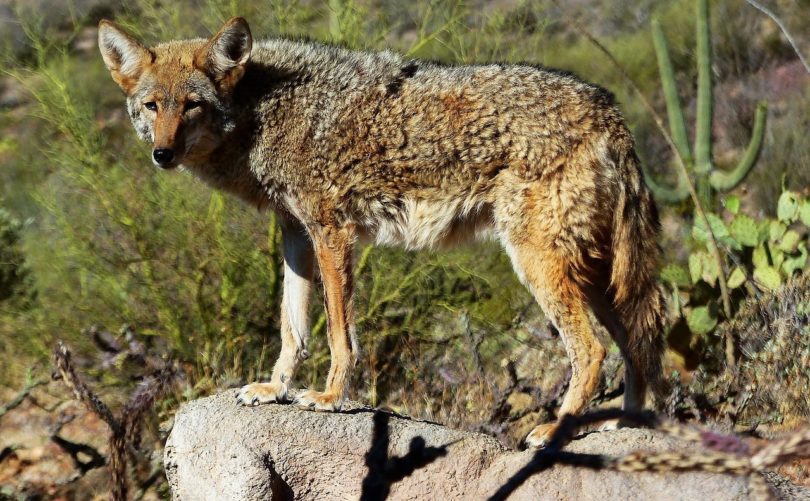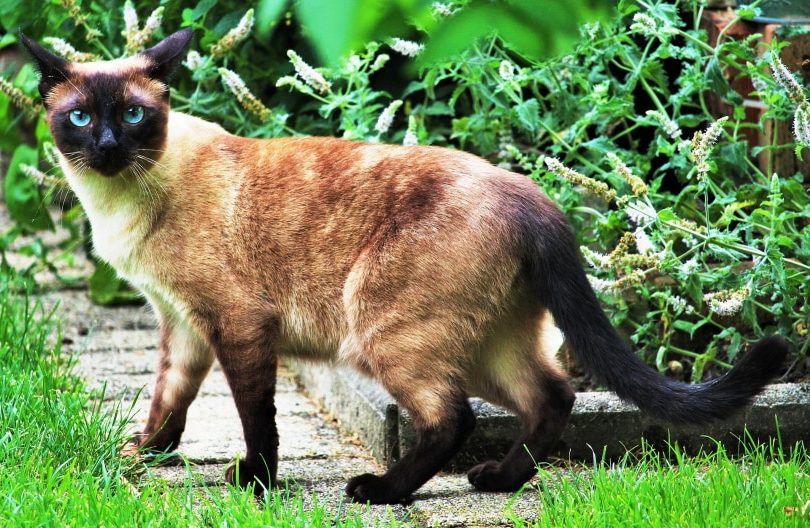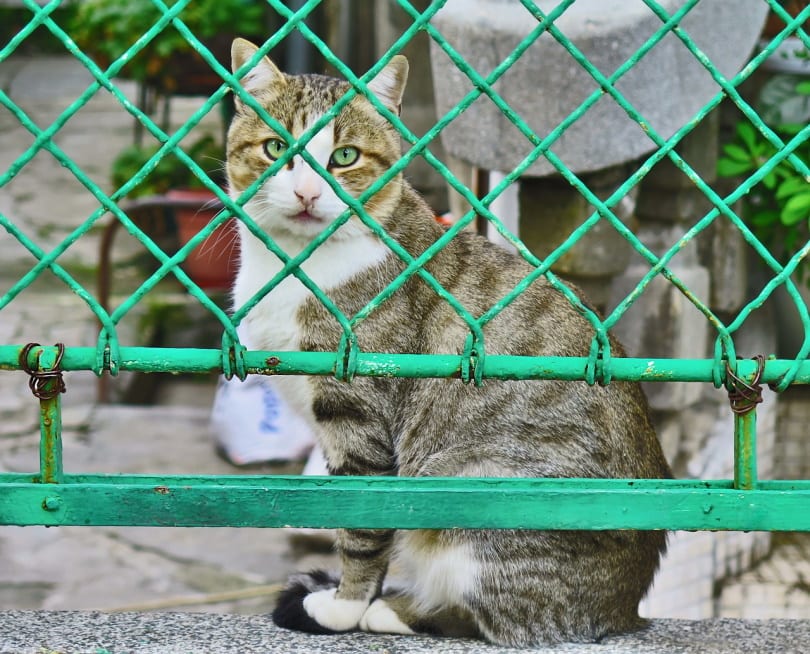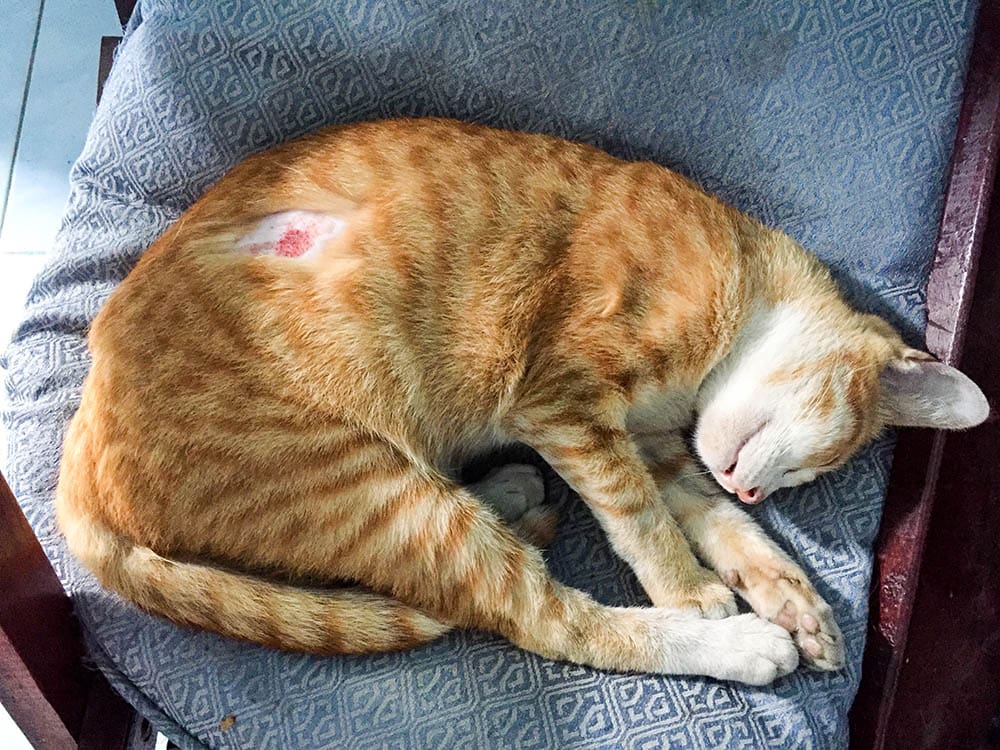VET APPROVED

The information is current and up-to-date in accordance with the latest veterinarian research.
Learn more »Click to Skip Ahead
Coyotes are abundant in the United States. You can find them in every state except Hawaii, and across Central America. Coyotes are wild canines that resemble a small wolf or dog, and they can pose a considerable threat to your cat because they often team up and work together to take down prey. If you have a cat that likes to go outside and want to know how you can keep it safe, you’ve come to the right place. Keep reading while we look at several steps you can take to protect your pet from these dangerous predators.

Do Coyotes Kill Cats?

Unfortunately, a coyote will kill your cat if it can’t find another food source, or if it’s traveling with others. Coyotes might prefer to eat smaller prey like mice, moles, squirrels, and rabbits, but if the food is scarce, it will chase after your cat.
A 2009 study followed eight coyotes for several months in Arizona to study their behavior. During the observation, there were 36 interactions between coyotes and cats, which resulted in 19 cat deaths. So, the odds are slightly better than 59% that the encounter will be deadly for your cat.

Can A Cat Fight Off a Coyote?

A coyote is slightly more than twice the size of most house cats, so it won’t be a fair fight. Coyotes also hunt similarly to the cat: lying in wait until finding the right moment to pounce, so the cat usually has little chance to defend itself. The cat’s only chance would be to use its sharp claws on the nose or eyes of the coyote, but as the study we mentioned earlier showed, the odds are not in the cat’s favor. Some lucky cats can escape a coyote by climbing a tree, but they are too fast to outrun.

Protecting Your Cat from Coyotes
- Install a fence around your property that is at least six feet tall.
- Make sure all of your trash cans are tightly closed.
- Don’t leave any food in your yard that might attract hungry coyotes.
- Pick up fallen fruit if you have fruit trees since coyotes have a sweet tooth and may also be able to smell the rotting fruit.
- Remove bird feeders, as they are another source of food for the coyote.
- Install a motion detector that turns on a light when there is movement. Coyotes don’t like bright lights and will often run off when they turn on, but they don’t bother the cat.
- Add more permanent lighting. If you have the budget for an increased electric bill and more light to your property that stays on might convince the coyote that your home is unsuitable for hunting, and it might move on to an area outside your cat’s territory.
- Place rags soaked in ammonia around your property to keep the coyotes away since they hate the smell. You will need to resoak them every few days to keep the scent strong until the coyote moves on.
- Keep your cat indoors at night.
- Build a shelter with several small exits that your cat can use if chased and coat it in ammonia. Make sure it’s constructed to be durable because coyotes can chew through wood and even wire.
- Keep your ears open. If your cat is in trouble, it will make a lot of noise that you can hear at a considerable distance. If you can get there in time to turn on a light or use a flashlight, you stand a good chance of saving your pet’s life.
- Keep your cat indoors at all times. This not only protects them from coyotes and other predators but also helps preserve local wildlife, as free-ranging cats have been shown to have a significant impact on native species.


Summary
It’s usually not hard to tell if there are coyotes in your area because they like to make themselves known by screeching and howling throughout the night, especially during the full moon. If you hear these howls, we strongly recommend keeping your cat indoors and only allowing it out during the day if it insists. The other steps we listed here are perfect for when you don’t hear a coyote, so they will be there to help your cat if one suddenly appears.
We hope you have enjoyed reading over this guide and found it helpful in answering your questions. If we have helped you provide a safer environment for your pet, please share this guide to protecting your cat from coyotes on Facebook and Twitter.
See also:
- Do Coyotes Make Good Pets? Can They Be Domesticated? Legality & More
- Will Essential Oils Have an Effect on Cats? What You Need to Know!
Featured Image Credit: Frans van Heerden, Pexels











